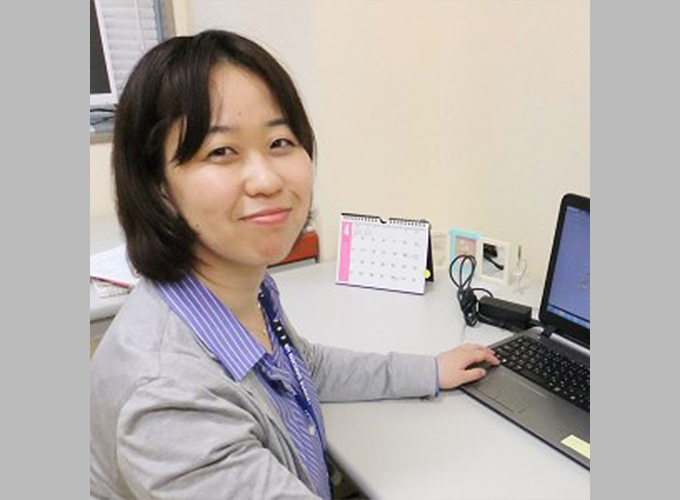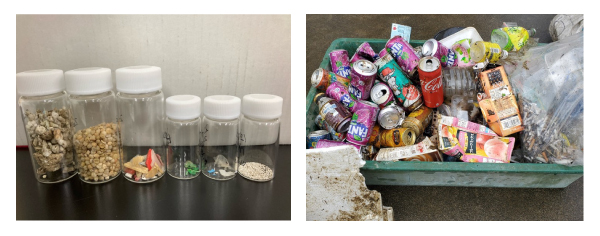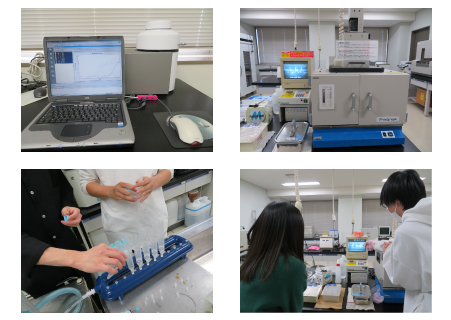Haruko Sakurama
Associate Professor, Ph.D. in Agriculture
- sakurama.haruko

- Areas of Research
- Applied Microbiology, Environmental Microbiology, Microbial Ecology, Enzyme Chemistry, Structural Biochemistry
- Profile
- Research
-
Haruko Sakurama is a Junior Associate Professor at the KUAS Faculty of Bioenvironmental Sciences. She obtained her Ph.D. in Agriculture from Kyoto University in 2014, the same institution where she received her Bachelor’s and Master’s degrees. She continued working in academia as a Research Fellow at Osaka University, Kanazawa University, and Ishikawa Prefectural University, and as an Assistant Professor at Kyoto University and Yamagata University before working for KUAS.
She specializes in Applied Microbiology and has been involved in kinetic analysis, X-ray crystallography, and molecular engineering of various microbial enzymes. At KUAS, she is searching for lactic acid bacteria useful for human health. In addition, she got interested in Microbial Ecology. She is also engaged in the research of microbial communities forming on plastic litter to elucidate the risk of plastic pollution.
At KUAS, she is in charge of classes concerning “Physics”, “Physics Laboratory”, “Applied Microbiology” and “Applied Microbiology Laboratory” in the Faculty of Bioenvironmental Sciences. She is belonging to FuBEIC (Future BioEnvironment Initiative-Center) member.
She enjoys drinking flavored tea such as green tea with peach flavor and black tea with cookie flavor!
-
In various environments, diverse microorganisms form a single biological community (microbial ecosystem) and adapt to survive and thrive. By using culture and environmental DNA analysis, Dr. Sakurama would like to clarify the characteristics acquired by individual microorganisms and their community in unique environments, deepen our understanding of microbial ecosystems, and contribute to the conservation of the global environment.
She is currently focusing on the “plastic waste problem”. In recent years, water pollution by plastic waste has spread worldwide, and many cases of organisms accidentally swallowing or ingesting plastic debris have been reported, making it a problem. In particular, microplastics smaller than 5 mm have been found in the bodies of various organisms such as birds, fish, and whales.
Do you know how dangerous plastic pollution can be? Sea turtles and other marine organisms sometimes mistake plastic bags floating in the ocean for jellyfish, swallow them, and starve to death without eating. However, the effects of such accidental ingestion and ingestion on organisms are not limited to toxicity caused by the plastic itself like physical damage such as clogging of the digestive tract. For example, it has been reported that microplastics adsorb up to one million times more persistent organic pollutants than the surrounding seawater. Environmental contaminants in the aquatic environment are adsorbed at high concentrations on the hydrophobic surface of plastics, raising concerns about their toxicity.

Dr. Sakurama is working on the plastic waste problem with professors in the Faculty of Bioenvironmental Sciences, who have a macro perspective. She is conducting research from a micro perspective, focusing on the microorganisms that live on plastic litter. Her team’s research has revealed that littered plastic waste contains more than 100,000 times more live microorganisms than river water, forming a “slime,” a microbial aggregate similar to that found in bathrooms. By learning what kind of microorganisms are growing in this “slime,” they hope to clarify the dangers of plastics.
